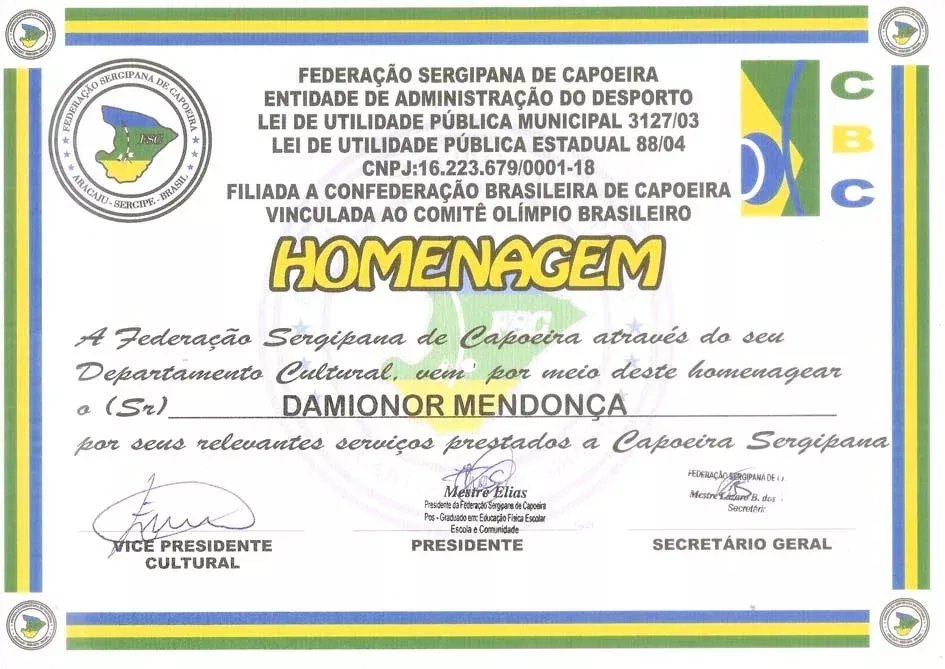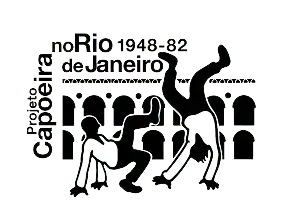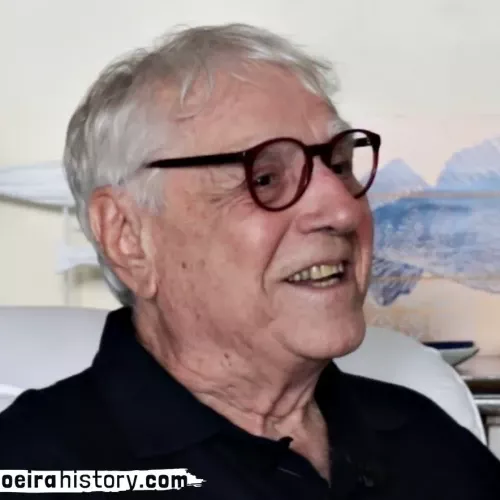Master Mendonça, became known as the author of the Capoeira Technical Regulations, and is also remembered as the creator of its official graduation system.
Geisimara Matos & Matthias Röhrig Assunção (April 2020)
Damionor Ribeiro de Mendonça was born 16 July 1931 in Aracaju, capital of Sergipe state in Brazil’s Northeast. He was the son of an army general and came to Rio de Janeiro in the 1950s, where he resided in Grajaú, in the northern zone of the city.
He got interested in capoeira in 1964, when he took up work in the security services of the Brazilian national bank, the Banco do Brasil. At that moment he decided, with some colleagues from work, that capoeira would be an excellent activity to add fighting skills to his profession. He chose to train capoeira with Artur Emídio, who became his master. However, according to Mestre Bebeto, he also learned capoeira with the group Bonfim, which at this moment was creating branches in the northern zone of Rio de Janeiro. In the 1970s Mendonça already ran his own capoeira classes in the Satélite Club of the Banco do Brasil.
Mestre Mendonça’s interest in capoeira quickly grew beyond mere practice, and he became active in capoeira organisations and public policies directed towards capoeira.

From 1967 onwards he started to fight for a regulatory framework for capoeira, which he conceived as a sport. During the Second Symposium on Capoeira, in 1969, representatives of each state were chosen to draft a project of regulation, to be sent to the Capoeira Department, which was at the time subordinated to the Brazilian Confederation of Pugilism. Damionor Mendonça was chosen to represent the city of Rio de Janeiro, which at the time had the status of a state – Guanabara.
He then became responsible for the project, which was officially adopted in 1973, under the name of “Technical Regulation of Capoeira”. In this quality he also introduced the official graduation system of the new Capoeira Federation, with the colours green, yellow, blue and white, to establish a hierarchy among practitioners. Based on the colours of the Brazilian flag, the graduation system starts with the green belt and moves on until the last stage, the white belt of the master category. Since there was no standard clothing for capoeiristas at the time, the Federation adopted a white colour as the official uniform for practitioners – inspired by the traditional white clothes that the old capoeiras in Bahia used on festive occasions.
M. Mendonça was very pro-active in the Masters’ committee in the Rio state Federation of Pugilism, and thereafter in the Brazilian Confederation of Capoeira, until an advanced age. He also liked to study capoeira and composed various songs that are played in capoeira rodas. Because of his dedication to the sportive version of capoeira he received a number of decorations, such as the title of honorary citizen awarded by the Rio de Janeiro Council. M Mendonça passed away in 2017.
Saiba mais:
Listen here to the interview that André Lacé did with Damionor Mendonça and Samuel Taets, in his programme at Rádio Roquette Pinto, broadcast in 1975.
Fontes:
Interview Mestre Bebeto
Interview André Lacé (2018)
Interview Mestre Silas (2018)
https://www.rabodearraia.com/capoeira/news/nota-de-falecimento-mestre-mendonca.html
http://www.rodadecapoeira.com.br/artigo/O-Legado-de-Mestre-Mendonca-para-a-Capoeira/




